-
 Bitcoin
Bitcoin $82,566.4689
0.19% -
 Ethereum
Ethereum $1,779.6850
-0.10% -
 Tether USDt
Tether USDt $0.9998
0.03% -
 XRP
XRP $2.0537
2.55% -
 BNB
BNB $589.8188
0.52% -
 USDC
USDC $0.9998
-0.02% -
 Solana
Solana $114.9791
0.70% -
 Dogecoin
Dogecoin $0.1641
4.11% -
 TRON
TRON $0.2412
4.15% -
 Cardano
Cardano $0.6353
1.62% -
 UNUS SED LEO
UNUS SED LEO $9.3746
0.37% -
 Toncoin
Toncoin $3.3731
-6.60% -
 Chainlink
Chainlink $12.5493
0.78% -
 Stellar
Stellar $0.2565
1.09% -
 Avalanche
Avalanche $17.9347
0.40% -
 Sui
Sui $2.2010
-1.94% -
 Shiba Inu
Shiba Inu $0.0...01213
1.26% -
 Hedera
Hedera $0.1617
3.48% -
 Polkadot
Polkadot $4.0354
3.83% -
 Litecoin
Litecoin $82.6619
2.07% -
 MANTRA
MANTRA $6.3054
0.41% -
 Bitcoin Cash
Bitcoin Cash $299.2804
0.17% -
 Bitget Token
Bitget Token $4.4878
-0.11% -
 Dai
Dai $1.0000
0.01% -
 Ethena USDe
Ethena USDe $0.9995
-0.01% -
 Monero
Monero $214.7676
1.57% -
 Hyperliquid
Hyperliquid $11.4665
1.19% -
 Uniswap
Uniswap $5.7693
0.41% -
 Pi
Pi $0.5195
-7.75% -
 NEAR Protocol
NEAR Protocol $2.4505
2.02%
Technical analysis methods of digital currency K-line charts
K-line charts are essential for crypto trading, showing price movements and patterns like hammers and dojis, aiding in trend analysis and decision-making.
Apr 02, 2025 at 11:22 pm
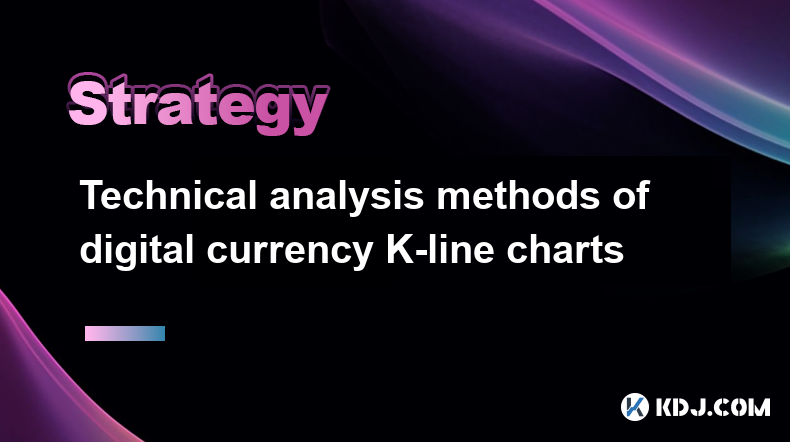
Understanding K-Line Charts in Cryptocurrency Trading
K-line charts, also known as candlestick charts, are a fundamental tool in technical analysis for cryptocurrencies. They visually represent price movements over a specific period, providing insights into market sentiment and potential future price action. Each candlestick represents the opening, closing, high, and low prices of a cryptocurrency within that time frame (e.g., 1 minute, 1 hour, 1 day). Understanding how to interpret these elements is crucial for effective trading. The body of the candlestick shows the opening and closing prices, while the wicks (shadows) represent the high and low prices reached during that period.
Deciphering Candlestick Patterns
Numerous candlestick patterns exist, each suggesting a potential shift in market momentum. Identifying these patterns requires practice and experience. Bullish patterns generally indicate a potential price increase, while bearish patterns suggest a potential price decrease. Some common patterns include:
- Hammer: A bullish reversal pattern characterized by a small body with a long lower wick.
- Inverted Hammer: A bearish reversal pattern, similar to a hammer but with a long upper wick.
- Engulfing Pattern: A strong reversal pattern where one candlestick completely engulfs the previous one. A bullish engulfing pattern signals a potential price increase, while a bearish engulfing pattern suggests a price decrease.
- Doji: A candlestick with almost equal opening and closing prices, indicating indecision in the market. Dojis often precede significant price movements.
- Shooting Star: A bearish reversal pattern with a long upper wick and a small body, suggesting a potential price drop.
Moving Averages and Their Significance
Moving averages are calculated by averaging the price over a specific period. They smooth out price fluctuations, making it easier to identify trends. Common moving averages include simple moving averages (SMA) and exponential moving averages (EMA). SMAs give equal weight to each data point, while EMAs give more weight to recent data points. Traders often use multiple moving averages to identify support and resistance levels, as well as potential trend changes. A bullish crossover occurs when a shorter-term moving average crosses above a longer-term moving average, suggesting a potential uptrend. Conversely, a bearish crossover indicates a potential downtrend.
Relative Strength Index (RSI) and its Application
The RSI is a momentum indicator that measures the magnitude of recent price changes to evaluate overbought or oversold conditions. It oscillates between 0 and 100. Generally, an RSI above 70 is considered overbought, suggesting a potential price correction, while an RSI below 30 is considered oversold, suggesting a potential price rebound. However, it's crucial to remember that RSI divergences can also occur, where the price makes a new high or low, but the RSI fails to confirm it. This divergence can signal a potential trend reversal.
Support and Resistance Levels
Support levels represent price points where buying pressure is strong enough to prevent further price declines. Resistance levels are price points where selling pressure is strong enough to prevent further price increases. These levels are often identified by observing previous price highs and lows on the K-line chart. Breakouts above resistance levels can signal a bullish trend, while breakdowns below support levels can signal a bearish trend. However, it's important to note that support and resistance levels are not absolute; they can be broken.
Volume Analysis in Conjunction with K-Lines
Volume analysis provides crucial context to K-line chart interpretation. High volume confirms price movements, indicating strong conviction behind the price action. For instance, a breakout above resistance with high volume is a stronger bullish signal than a breakout with low volume. Conversely, low volume during a price movement can suggest weak conviction and a potential reversal. Analyzing volume alongside candlestick patterns and moving averages provides a more comprehensive picture of market dynamics.
Fibonacci Retracements and Extensions
Fibonacci retracements and extensions are based on the Fibonacci sequence, a mathematical sequence found in nature. These tools are used to identify potential support and resistance levels based on previous price swings. Retracements measure potential pullbacks within an established trend, while extensions project potential price targets for the continuation of a trend. Traders often use these tools to place stop-loss orders and take-profit orders.
Combining Technical Indicators for Enhanced Analysis
While individual indicators can provide valuable insights, combining multiple indicators often leads to more accurate predictions. For example, combining moving averages with RSI and candlestick patterns can provide a more comprehensive view of market sentiment and potential price movements. However, it's crucial to understand the limitations of each indicator and avoid relying solely on technical analysis. Fundamental analysis should also be considered for a complete trading strategy.
Frequently Asked Questions
Q: What is the most important aspect of K-line chart analysis?
A: Understanding the context of candlestick patterns, volume, and the relationship between price action and technical indicators is crucial. No single element provides a complete picture.
Q: How many moving averages should I use?
A: There's no magic number. Experiment with different combinations to find what works best for your trading style and the specific cryptocurrency you're analyzing. Common combinations include 50-day and 200-day SMAs, or 12-period and 26-period EMAs.
Q: Are candlestick patterns always reliable?
A: No, candlestick patterns are not foolproof. They should be used in conjunction with other technical indicators and considered alongside fundamental analysis. False signals can and do occur.
Q: How do I identify support and resistance levels effectively?
A: Look for previous price highs and lows that have acted as significant turning points. Multiple touches at the same level often strengthen its significance as a support or resistance level.
Q: Can I use K-line charts for all cryptocurrencies?
A: Yes, K-line charts are applicable to all cryptocurrencies. However, remember that each cryptocurrency has its unique characteristics and market dynamics. Analysis should be tailored to the specific asset.
Q: What are the limitations of technical analysis using K-line charts?
A: Technical analysis is based on historical price data and does not predict the future with certainty. Unexpected news or events can significantly impact price movements, regardless of technical indicators. It's essential to combine technical analysis with fundamental analysis and risk management.
Disclaimer:info@kdj.com
The information provided is not trading advice. kdj.com does not assume any responsibility for any investments made based on the information provided in this article. Cryptocurrencies are highly volatile and it is highly recommended that you invest with caution after thorough research!
If you believe that the content used on this website infringes your copyright, please contact us immediately (info@kdj.com) and we will delete it promptly.
- Dogecoin Price Soared Over 2% Today, Indicating a Renewed Market Interest in the Leading Meme Coin
- 2025-04-04 21:10:12
- Filecoin FIL $2.76 24h volatility: 2.9% Market cap: $1.79 B Vol. 24h: $489.77 M
- 2025-04-04 21:10:12
- The latest Dogecoin price prediction is raising eyebrows
- 2025-04-04 21:05:12
- With meme coins like Pepe and Shiba Inu back in the spotlight, traders are wondering which token could deliver the biggest gains this week
- 2025-04-04 21:05:12
- Market expert Ali Martinez estimates that the price of this dog-themed meme coin has the potential to surge by around 250% to touch the $0.5 level
- 2025-04-04 21:00:12
- Ethereum (ETH) price plunges further as investors limit their risk exposure
- 2025-04-04 21:00:12
Related knowledge
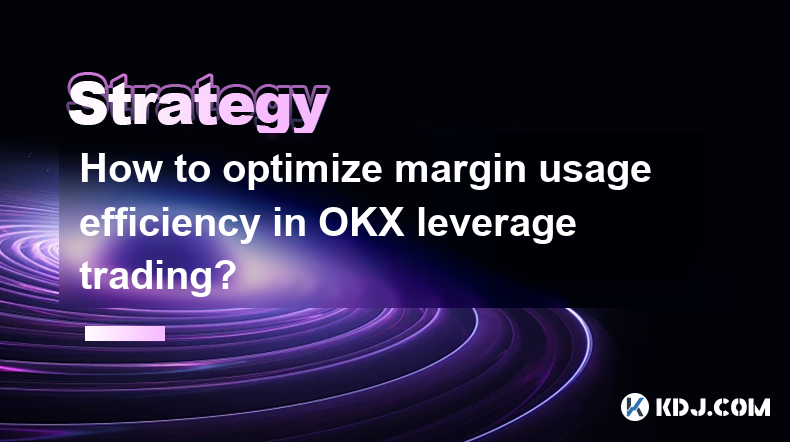
How to optimize margin usage efficiency in OKX leverage trading?
Apr 04,2025 at 03:21pm
Margin usage efficiency is a critical aspect of leverage trading on platforms like OKX, where traders aim to maximize their returns while managing risk. Understanding how to optimize margin usage can significantly enhance your trading performance. This article will delve into various strategies and techniques to help you make the most out of your margin...
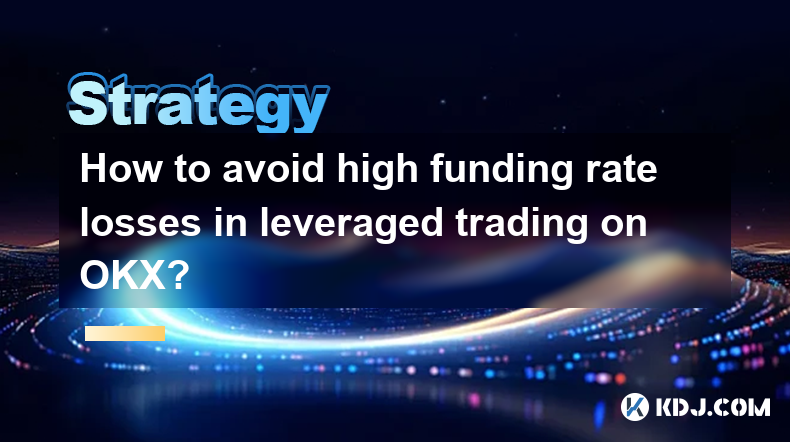
How to avoid high funding rate losses in leveraged trading on OKX?
Apr 04,2025 at 05:28pm
Understanding Funding Rates in Leveraged Trading on OKXFunding rates are a critical component of leveraged trading on platforms like OKX. They represent the periodic payments made between traders to maintain the balance between the futures price and the spot price of the underlying asset. When trading with leverage, understanding and managing funding ra...
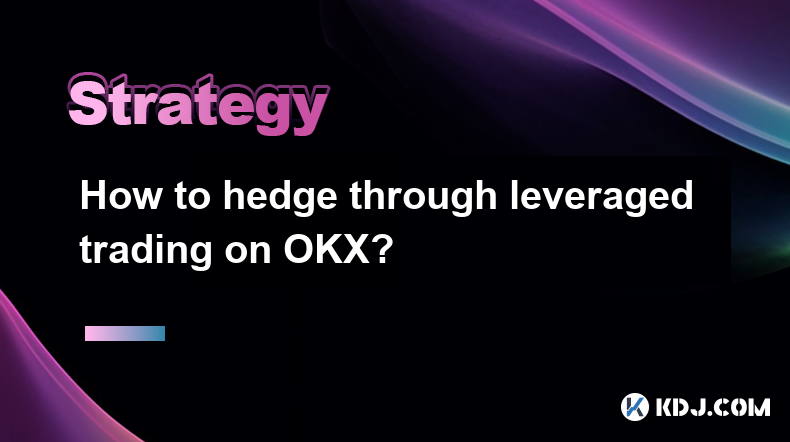
How to hedge through leveraged trading on OKX?
Apr 04,2025 at 01:42pm
Hedging through leveraged trading on OKX can be an effective strategy for managing risk in the volatile cryptocurrency market. This article will guide you through the process of setting up and executing a hedging strategy using OKX's leveraged trading features. We will cover the basics of leveraged trading, how to set up a hedge, and the steps to execut...
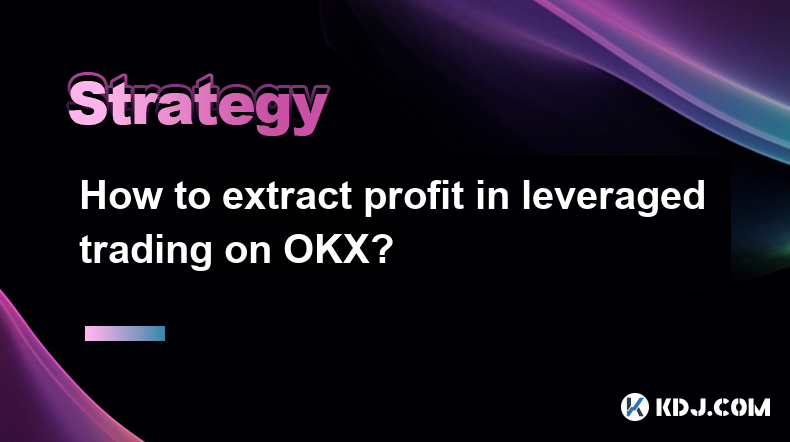
How to extract profit in leveraged trading on OKX?
Apr 04,2025 at 05:42am
Leveraged trading on OKX can be a powerful tool for traders looking to amplify their potential profits. However, it also comes with increased risk, making it essential to understand how to effectively extract profit from these trades. This article will guide you through the process of leveraging OKX's platform to maximize your gains while managing the i...
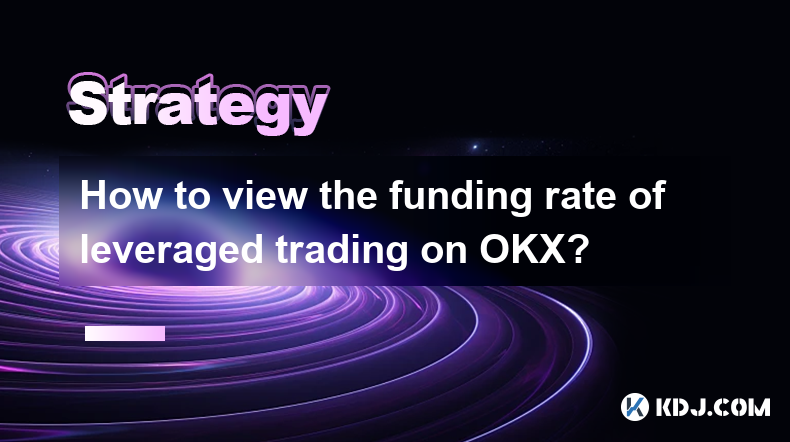
How to view the funding rate of leveraged trading on OKX?
Apr 04,2025 at 07:07am
Understanding the funding rate is crucial for anyone involved in leveraged trading on OKX. The funding rate is a mechanism used in perpetual futures contracts to ensure that the market price of the futures remains closely aligned with the spot price of the underlying asset. This article will guide you through the process of viewing the funding rate on O...
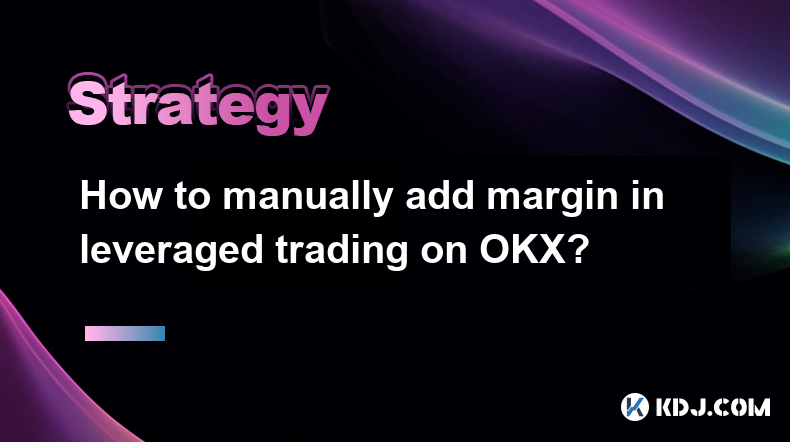
How to manually add margin in leveraged trading on OKX?
Apr 04,2025 at 05:21pm
Introduction to Margin in Leveraged Trading on OKXLeveraged trading on OKX allows traders to amplify their trading positions by borrowing funds from the platform. Margin is the amount of funds required to open and maintain these leveraged positions. Understanding how to manually add margin is crucial for managing your trades effectively and avoiding liq...

How to optimize margin usage efficiency in OKX leverage trading?
Apr 04,2025 at 03:21pm
Margin usage efficiency is a critical aspect of leverage trading on platforms like OKX, where traders aim to maximize their returns while managing risk. Understanding how to optimize margin usage can significantly enhance your trading performance. This article will delve into various strategies and techniques to help you make the most out of your margin...

How to avoid high funding rate losses in leveraged trading on OKX?
Apr 04,2025 at 05:28pm
Understanding Funding Rates in Leveraged Trading on OKXFunding rates are a critical component of leveraged trading on platforms like OKX. They represent the periodic payments made between traders to maintain the balance between the futures price and the spot price of the underlying asset. When trading with leverage, understanding and managing funding ra...

How to hedge through leveraged trading on OKX?
Apr 04,2025 at 01:42pm
Hedging through leveraged trading on OKX can be an effective strategy for managing risk in the volatile cryptocurrency market. This article will guide you through the process of setting up and executing a hedging strategy using OKX's leveraged trading features. We will cover the basics of leveraged trading, how to set up a hedge, and the steps to execut...

How to extract profit in leveraged trading on OKX?
Apr 04,2025 at 05:42am
Leveraged trading on OKX can be a powerful tool for traders looking to amplify their potential profits. However, it also comes with increased risk, making it essential to understand how to effectively extract profit from these trades. This article will guide you through the process of leveraging OKX's platform to maximize your gains while managing the i...

How to view the funding rate of leveraged trading on OKX?
Apr 04,2025 at 07:07am
Understanding the funding rate is crucial for anyone involved in leveraged trading on OKX. The funding rate is a mechanism used in perpetual futures contracts to ensure that the market price of the futures remains closely aligned with the spot price of the underlying asset. This article will guide you through the process of viewing the funding rate on O...

How to manually add margin in leveraged trading on OKX?
Apr 04,2025 at 05:21pm
Introduction to Margin in Leveraged Trading on OKXLeveraged trading on OKX allows traders to amplify their trading positions by borrowing funds from the platform. Margin is the amount of funds required to open and maintain these leveraged positions. Understanding how to manually add margin is crucial for managing your trades effectively and avoiding liq...
See all articles




















































































